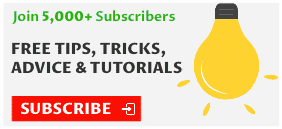Ready to conquer the world with a Stradivarius? Well, first things first – let’s talk about string instrument sizes!
Finding the right size is key to creating enchanting music, whether a delicate violin or a large string instrument like a double bass. Each size offers its unique charm and comfort for the musician, shaping how melodies come to life.. I’ve learned that instrument size isn’t just about age; it’s about feeling comfy, playing easily, and creating enchanting melodies.
In this handy guide, we’ll explore violins, violas, cellos, and double basses, unlocking the secrets to finding your perfect-sized musical partner. Music-making is even more enchanting when your instrument feels part of your magical self!
Violins and Violas

“Under the chin” string instruments offer the widest range or string instrument sizes of the family. Children regularly begin learning from as young as three so it is possible to find instruments to suit even the smallest of fingers and hands relatively easily.
For both violin and viola, when the child holds the instrument under their chin they should be able to comfortably curl the palm of their hand around the scroll with only a slight bend in the arm. You may also need accessories such as a pad or shoulder rest to support the instrument in the correct place on the shoulder and avoid strain on the child’s neck.
Music teachers are also an invaluable source of expertise in this regard and it is in their interests to ensure their pupils are correctly set up. If you already have a teacher, definitely take their advice!
The following measurements should give you a good idea which size to choose:
| Age of Child (years) | Arm length (cm) | Violin size (fraction) |
|---|---|---|
| 3-5 | Under 35.5 | 1/32 |
| 4-5 | 35.5 | 1/16 |
| 4-6 | 38 | 1/10 |
| 5-7 | 42 | 1/8 |
| 7-9 | 43-47 | 1/4 |
| 9-12 | 48-51 | 1/2 |
| Small Teen/Adul | 52+ and small hands | 3/4 |
| 11+/Adult | 56 or longer | 4/4 |
| Age of Child (years) | Arm length (cm) | Viola size (fraction) |
|---|---|---|
| Under 6 | 50cm or less | Use ¼ size violin with viola strings |
| 6-7 | 50-56 | 12” (or half size violin with viola strings) |
| 7-9 | 56-57 | 13” (or ¾ size violin with viola strings) |
| 9-12 | 58-62 | 14” (or 4/4 violin with viola strings) |
| 10-12 or Small Adult | 62-64 | 15" |
| Adult | 63-66 | 15.5" |
| Large Adult | 66+ | 16-16.5" |
For a more comprehensive article on what size viola you need, click here.
But as violin is the most popular string instrument, we created this handy little video (filmed at Abbey Road no less!) explaining violin sizes:

Cellos
Similar to violins, cellos are also available in a wide range of string instrument sizes for even the very youngest children. However, young cellists are increasingly rare these days, and you may well find yourself obliged to order a cello for your child without being able to see it first. Fear not! That’s where I come in to save the day…
Everyone has their own sizing method when it comes to the cello, but in our opinion the best way to find a good size is to start with the child sitting with their feet comfortably flat on the floor, and their knees bent at a 90 degree angle. Holding the cello body between the knees, the upper rim of the cello (where the neck and the body meet) should touch the breastbone, the lower corner should touch the knee, and the neck should be a few inches away from the left shoulder. The table below provides a useful guide in terms of age and measurements:

| Age of Child (years) | Arm length (cm) | Height | Cello size (fraction) |
|---|---|---|---|
| 3-5 | Under 41 | Under 91 | 1/10 |
| 5-6 | 41-46 | 91-110 | 1/8 |
| 6-7 | 46-51 | 110-123 | 1/2 |
| 8-10 | 51-56 | 123-140 | 1/2 |
| 11-13 | 56-61 | 140-152 | 3/4 |
| 14+ | 61+ | 152+ | 4/4 |
Double Basses
The largest string instrument of the family, the double bass is always slightly taller than its player, and most younger students will need help carrying it when they begin learning. However, thanks to developments in music education over the last few years, a wide range of mini basses is available to give young beginners as easy a start as possible.
| Age of Child (years) | Double Bass size (fraction) |
|---|---|
| 5-7 | 1/8 |
| 7-9 | 1/4 |
| 9-13 (or small adult) | 1/2 |
| 14-18 | 3/4 |
| Adult | 4/4 (only if very tall/large hands, otherwise stick with a 3/4) |
When sitting or standing in their playing position, the player’s left hand should be at eye level when playing in the first position (about 15cm down from the top of the fingerboard).

The correct instrument size for your child
“Does it really matter?” I hear you ask, and it most certainly does!
The best size string instrument for your child will depend on many things: their height, their arm or body length, the size of their left hand, and finger length to name just a few. Choosing the incorrect size of instrument can cause all sorts of issues, ranging from slower musical progress to physical discomfort.
We will now discuss the considerations for each string instrument in turn so that you can confidently choose the best instrument size for your child.
VIOLIN vs VIOLA vs
CELLO vs BASS
The following issues are common to all the instruments in the string family:
Violin, Viola, Cello, and Double Bass:
- When in doubt, size DOWN. While it is tempting to give a child “room to grow”, an instrument that is too big can cause physical issues and impede musical progress.
- Consider accessories! Your string instrument should come with a bow and a good quality case or cover. You will also need some rosin for the bow and your teacher should advise which sheet music to get.
- Many shops and online retailers offer a rental scheme for string instruments, which enables children to swap instruments as they grow, moving smoothly through the sizes. They are also an excellent source of advice and customer service.
- Most string instruments use fractions to describe sizes: 1/10, 1/8, 1/4 etc. The exception is violas, where the length of the instrument’s back is measured in inches.
- Good instrument brands for beginners include Stentor, Hidersine, Eastman and Primavera, all of which are available across the size range from my favourite online music store, Gear4music. They provide a 2-year warranty on all products, and a 30-day money back guarantee.
- In an ideal world, it is best to try out a variety of instrument sizes in person. However, we recognize this is not always feasible and it is also possible to order an instrument online to be delivered. The information below will ensure you always make the best choice.
I love all string instruments, but if you’re still not sure which one to choose, watch this rather funny video filmed at Abbey Road Studios:

String instrument sizes
Summary
In this article, we explore the whims of violins, the versatility of violas, the charisma of cellos, and the depth of double basses, offering a comprehensive string instruments list. Finding the right size for each instrument is crucial for making beautiful music and ensuring that musicians of all ages feel comfortable while playing.
To sum it up:
- Violins: Sizes march from 1/32 to 4/4.
- Violas: They stretch from 12″ to 16.5″.
- Cellos: Adorable 1/8 up to a grand 4/4.
- Basses: Often found in 3/4 or 7/8, less commonly in 4/4.
- Guitar Strings: Gauges vary, influencing playability and sound.
There, I’ve wrapped it up in a neat little package. Remember, picking the perfect size can turn a good playing experience into a great one! Knowing there’s a perfect fit out there just for you is a delight.
Happy strumming and bowing!
FAQ's
Violin, viola, cello, and double bass
Violin, viola, cello, and double bass are the members of the string family and are played using a bow. Other string instruments, such as guitar or harp, are played by plucking the strings.
There are four bowed string instruments, and these are the main members of the string family. They each have four strings and are a similar shape.
Yes.
The size of a violin is determined by the length of its body. To measure the size, place the violin under your chin and extend your arm along the length of the body.
The double bass is the largest and lowest-pitched string instrument in the modern orchestra. Its impressive size and deep, resonant sound serve as a foundational element in orchestral music.












imagine picking up the double bass thinking it’s just a big violin, then bam, you’re in a jazz band. happens to the best of us, right? but seriously, good breakdown on sizes. helps to not turn my music journey into a comedy skit.
Thanks FretNot.
Fascinated by how the article delineated between cellos and basses. It reminded me of my orchestra days, especially the part explaining the importance of size in relation to the player’s comfort and performance. One aspect often overlooked is the weight of the instrument, particularly for younger players who might gravitate towards one but need the physicality for another. Would be curious to see more discussion on that front for future parents navigating these waters.
Thanks Bryce – I’ll keep that in mind for a future article!
Hey there! Quick q: for a kiddo who’s 9 but pretty small for their age, would you lean more towards a violin or viola? Trying to make sense of the size guide. Thanks!
Hi – I’d suggest a violin as a starting point – but I think ultimately, it depends on your 9 year old and what excited them!
Excellent overview of string instruments. As a music teacher, I appreciate the detailed comparison between violin, viola, cello, and bass—it’s not just about the pitch but also the physicality of playing each instrument. Sizing for children is a crucial yet often confusing aspect for many parents. This guide simplifies that decision-making process remarkably.
Absolutely, the physical fit of the instrument significantly impacts a student’s learning curve and interest. It’s also worth noting how the right size affects posture and playing technique, essential for budding musicians.
Hello there! I simply want to offer you a huge thumbs up for the excellent info you have right here on this post. I will be returning to your website for more soon.
Needed to research string instruments for a school project, I think this really helped.
Glad we could help Molly.